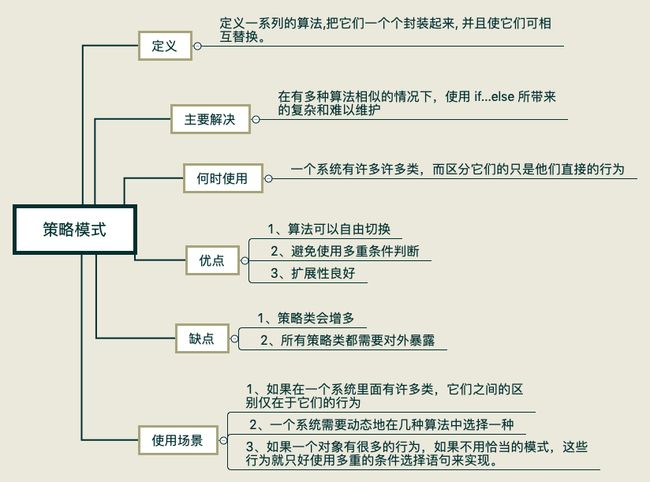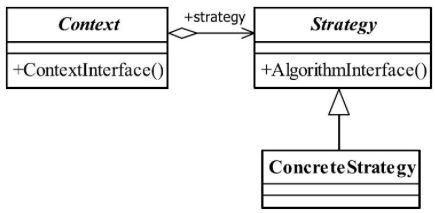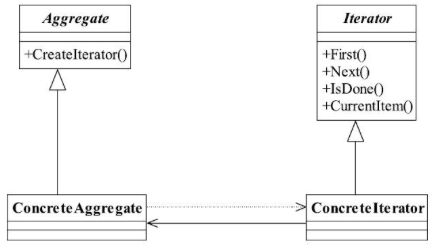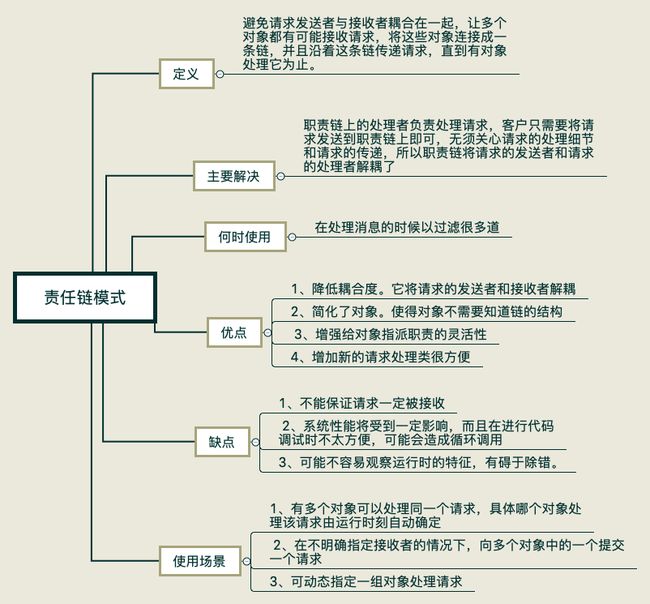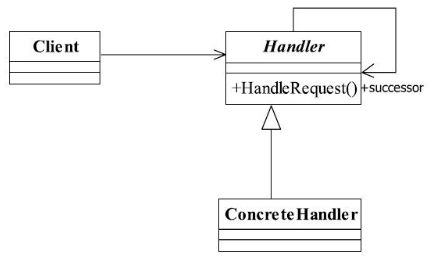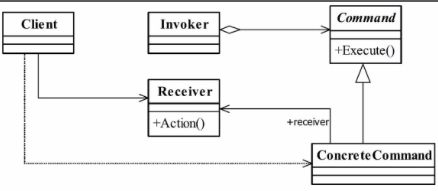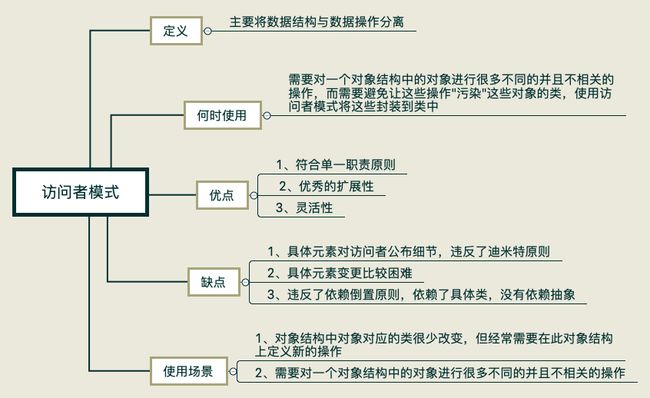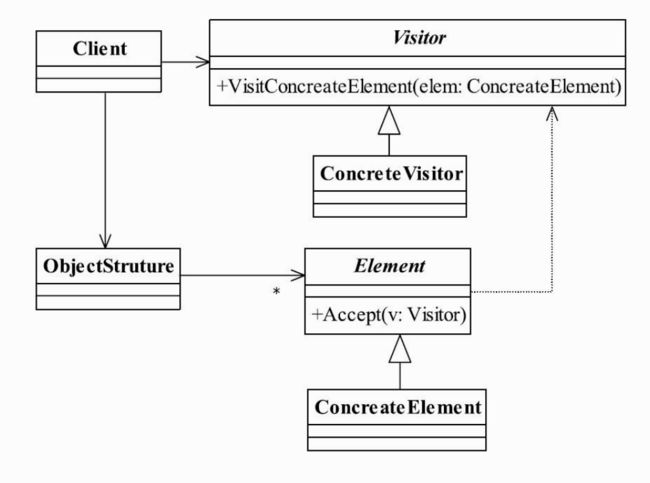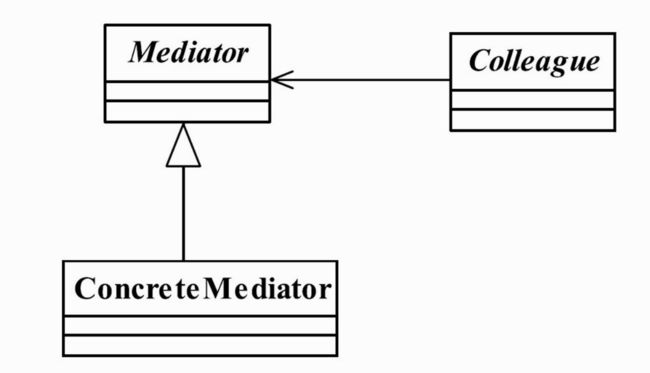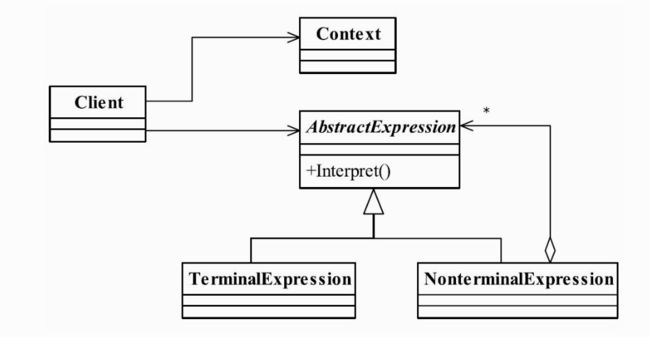一、策略模式
策略模式使用的就是面向对象的继承和多态机制,非常容易理解和掌握,策略模式的三个角色:
Context封装角色
它也叫做上下文角色,起承上启下封装作用,屏蔽高层模块对策略、算法的直接访问,封装可能存在的变化。Strategy抽象策略角色
策略、算法家族的抽象,通常为接口,定义每个策略或算法必须具有的方法和属性。,类图中的AlgorithmInterface是什么意思,algorithm是“运算法则”的意思,结合起来意思就明白了。ConcreteStrategy具体策略角色
实现抽象策略中的操作,该类含有具体的算法。
//抽象的策略角色
public interface Strategy {
//策略模式的运算法则
public void doSomething();
}
//具体策略也是非常普通的一个实现类,只要实现接口中的方法就可以
public class ConcreteStrategy1 implements Strategy {
public void doSomething() {
System.out.println("具体策略1的运算法则");
}
}
public class ConcreteStrategy2 implements Strategy {
public void doSomething() {
System.out.println("具体策略2的运算法则");
}
}
//封装角色
public class Context {
//抽象策略
private Strategy strategy = null;
//构造函数设置具体策略
public Context(Strategy _strategy){
this.strategy = _strategy;
}
//封装后的策略方法
public void doAnythinig(){
this.strategy.doSomething();
}
}
//高层模块
public class Client {
public static void main(String[] args) {
//声明一个具体的策略
Strategy strategy = new ConcreteStrategy1();
//声明上下文对象
Context context = new Context(strategy);
//执行封装后的方法
context.doAnythinig();
}
}
策略模式的重点就是封装角色,它是借用了代理模式的思路,大家可以想想,它和代理模式有什么差别,差别就是策略模式的封装角色和被封装的策略类不用是同一个接口,如果是同一个接口那就成为了代理模式。
二、模板方法模式
模板方法模式确实非常简单,仅仅使用了Java的继承机制,但它是一个应用非常广泛的模式。其中,AbstractClass叫做抽象模板,它的方法分为两类:
基本方法
基本方法也叫做基本操作,是由子类实现的方法,并且在模板方法被调用。模板方法
可以有一个或几个,一般是一个具体方法,也就是一个框架,实现对基本方法的调度,完成固定的逻辑。
为了防止恶意的操作,一般模板方法都加上final关键字,不允许被覆写。
在类图中还有一个角色:具体模板。ConcreteClass1和ConcreteClass2属于具体模板,实现父类所定义的一个或多个抽象方法,也就是父类定义的基本方法在子类中得以实现。
//抽象模板类
public abstract class AbstractClass {
//基本方法
protected abstract void doSomething();
//基本方法
protected abstract void doAnything();
//模板方法
public void templateMethod(){
/*
* 调用基本方法,完成相关的逻辑
*/
this.doAnything();
this.doSomething();
}
}
// 具体模板类
public class ConcreteClass1 extends AbstractClass {
//实现基本方法
protected void doAnything() {
//业务逻辑处理
}
protected void doSomething() {
//业务逻辑处理
}
}
public class ConcreteClass2 extends AbstractClass {
//实现基本方法
protected void doAnything() {
//业务逻辑处理
}
protected void doSomething() {
//业务逻辑处理
}
}
//场景类
public class Client {
public static void main(String[] args) {
AbstractClass class1 = new ConcreteClass1();
AbstractClass class2 = new ConcreteClass2();
//调用模板方法
class1.templateMethod();
class2.templateMethod();
}
}
抽象模板中的基本方法尽量设计为protected类型,符合迪米特法则,不需要暴露的属性或方法尽量不要设置为protected类型。实现类若非必要,尽量不要扩大父类中的访问权限。
三、观察者模式
Subject被观察者
定义被观察者必须实现的职责,它必须能够动态地增加、取消观察者。它一般是抽象类或者是实现类,仅仅完成作为被观察者必须实现的职责:管理观察者并通知观察者。Observer观察者
观察者接收到消息后,即进行update(更新方法)操作,对接收到的信息进行处理。ConcreteSubject具体的被观察者
定义被观察者自己的业务逻辑,同时定义对哪些事件进行通知。ConcreteObserver具体的观察者
每个观察在接收到消息后的处理反应是不同,各个观察者有自己的处理逻辑。
// 被观察者
public abstract class Subject {
//定义一个观察者数组
private Vector obsVector = new Vector();
//增加一个观察者
public void addObserver(Observer o){
this.obsVector.add(o);
}
//删除一个观察者
public void delObserver(Observer o){
this.obsVector.remove(o);
}
//通知所有观察者
public void notifyObservers(){
for(Observer o:this.obsVector){
o.update();
}
}
}
//具体被观察者
public class ConcreteSubject extends Subject {
//具体的业务
public void doSomething(){
/*
* do something
*/
super.notifyObservers();
}
}
//观察者
public interface Observer {
//更新方法
public void update();
}
//具体观察者
public class ConcreteObserver implements Observer {
//实现更新方法
public void update() {
System.out.println("接收到信息,并进行处理!");
}
}
//场景类
public class Client {
public static void main(String[] args) {
//创建一个被观察者
ConcreteSubject subject = new ConcreteSubject();
//定义一个观察者
Observer obs= new ConcreteObserver();
//观察者观察被观察者
subject.addObserver(obs);
//观察者开始活动了
subject.doSomething();
}
}
被观察者的职责非常简单,就是定义谁能够观察,谁不能观察,程序中使用ArrayList和Vector没有太大的差别,ArrayList是线程异步,不安全;Vector是线程同步,安全——就这点区别。
四、迭代模式
迭代器是为容器服务的,那什么是容器呢? 能容纳对象的所有类型都可以称之为容器,例如Collection集合类型、Set类型等,迭代器模式就是为解决遍历这些容器中的元素而诞生的
Iterator抽象迭代器
抽象迭代器负责定义访问和遍历元素的接口,而且基本上是有固定的3个方法:first()获得第一个元素,next()访问下一个元素,isDone()是否已经访问到底部(Java叫做hasNext()方法)。ConcreteIterator具体迭代器
具体迭代器角色要实现迭代器接口,完成容器元素的遍历。Aggregate抽象容器
容器角色负责提供创建具体迭代器角色的接口,必然提供一个类似createIterator()这样的方法,在Java中一般是iterator()方法。Concrete Aggregate具体容器
具体容器实现容器接口定义的方法,创建出容纳迭代器的对象。
//抽象迭代器
public interface Iterator {
//遍历到下一个元素
public Object next();
//是否已经遍历到尾部
public boolean hasNext();
//删除当前指向的元素
public boolean remove();
}
//具体迭代器
public class ConcreteIterator implements Iterator {
private Vector vector = new Vector();
//定义当前游标
public int cursor = 0;
@SuppressWarnings("unchecked")
public ConcreteIterator(Vector _vector){
this.vector = _vector;
}
//判断是否到达尾部
public boolean hasNext() {
if(this.cursor == this.vector.size()){
return false;
}else{
return true;
}
}
//返回下一个元素
public Object next() {
Object result = null;
if(this.hasNext()){
result = this.vector.get(this.cursor++);
}else{
result = null;
}
return result;
}
//删除当前元素
public boolean remove() {
this.vector.remove(this.cursor);
return true;
}
}
//抽象容器
public interface Aggregate {
//是容器必然有元素的增加
public void add(Object object);
//减少元素
public void remove(Object object);
//由迭代器来遍历所有的元素
public Iterator iterator();
}
//具体容器
public class ConcreteAggregate implements Aggregate {
//容纳对象的容器
private Vector vector = new Vector();
//增加一个元素
public void add(Object object) {
this.vector.add(object);
}
//返回迭代器对象
public Iterator iterator() {
return new ConcreteIterator(this.vector);
}
//删除一个元素
public void remove(Object object) {
this.remove(object);
}
}
//场景类
public class Client {
public static void main(String[] args) {
//声明出容器
Aggregate agg = new ConcreteAggregate();
//产生对象数据放进去
agg.add("abc");
agg.add("aaa");
agg.add("1234");
//遍历一下
Iterator iterator = agg.iterator();
while(iterator.hasNext()){
System.out.println(iterator.next());
}
}
}
五、责任链模式
责任链模式的重点是在“链”上,由一条链去处理相似的请求在链中决定谁来处理这个请求,并返回相应的结果。
//抽象处理者
public abstract class Handler {
private Handler nextHandler;
//每个处理者都必须对请求做出处理
public final Response handleMessage(Request request){
Response response = null;
//判断是否是自己的处理级别
if(this.getHandlerLevel().equals(request.getRequestLevel())){
response = this.echo(request);
}else{ //不属于自己的处理级别
//判断是否有下一个处理者
if(this.nextHandler != null){
response = this.nextHandler.handleMessage(request);
}else{
//没有适当的处理者,业务自行处理
}
}
return response;
}
//设置下一个处理者是谁
public void setNext(Handler handler){
this.nextHandler = handler;
}
//每个处理者都有一个处理级别
protected abstract Level getHandlerLevel();
//每个处理者都必须实现处理任务
protected abstract Response echo(Request request);
}
//具体处理者
public class ConcreteHandler1 extends Handler {
//定义自己的处理逻辑
protected Response echo(Request request) {
//完成处理逻辑
return null;
}
//设置自己的处理级别
protected Level getHandlerLevel() {
//设置自己的处理级别
return null;
}
}
public class ConcreteHandler2 extends Handler {
//定义自己的处理逻辑
protected Response echo(Request request) {
//完成处理逻辑
return null;
}
//设置自己的处理级别
protected Level getHandlerLevel() {
//设置自己的处理级别
return null;
}
}
public class ConcreteHandler3 extends Handler {
//定义自己的处理逻辑
protected Response echo(Request request) {
//完成处理逻辑
return null;
}
//设置自己的处理级别
protected Level getHandlerLevel() {
//设置自己的处理级别
return null;
}
}
//场景类
public class Client {
public static void main(String[] args) {
//声明所有的处理节点
Handler handler1 = new ConcreteHandler1();
Handler handler2 = new ConcreteHandler2();
Handler handler3 = new ConcreteHandler3();
//设置链中的阶段顺序1-->2-->3
handler1.setNext(handler2);
handler2.setNext(handler3);
//提交请求,返回结果
Response response = handler1.handlerMessage(new Request());
}
}
六、命令模式
- Receiver接收者角色
该角色就是干活的角色,命令传递到这里是应该被执行的。 - Command命令角色
需要执行的所有命令都在这里声明。 - Invoker调用者角色
接收到命令,并执行命令
//通用Receiver类
public abstract class Receiver {
//抽象接收者,定义每个接收者都必须完成的业务
public abstract void doSomething();
}
//具体的Receiver类
public class ConcreteReciver1 extends Receiver{
//每个接收者都必须处理一定的业务逻辑
public void doSomething(){
}
}
public class ConcreteReciver2 extends Receiver{
//每个接收者都必须处理一定的业务逻辑
public void doSomething(){
}
}
//抽象的Command类
public abstract class Command {
//每个命令类都必须有一个执行命令的方法
public abstract void execute();
}
//具体的Command类
public class ConcreteCommand1 extends Command {
//对哪个Receiver类进行命令处理
private Receiver receiver;
//构造函数传递接收者
public ConcreteCommand1(Receiver receiver){
this.receiver = receiver;
}
//必须实现一个命令
public void execute() {
//业务处理
this.receiver.doSomething();
}
}
public class ConcreteCommand2 extends Command {
//哪个Receiver类进行命令处理
private Receiver receiver;
//构造函数传递接收者
public ConcreteCommand2(Receiver receiver){
this.receiver = receiver;
}
//必须实现一个命令
public void execute() {
//业务处理
this.receiver.doSomething();
}
}
//调用者Invoker类
public class Invoker {
private Command command;
//受气包,接受命令
public void setCommand(Command command){
this.command = command;
}
//执行命令
public void action(){
this.command.execute();
}
}
//场景类
public class Client {
public static void main(String[] args) {
//首先声明调用者Invoker
Invoker invoker = new Invoker();
//定义接收者
Receiver receiver = new ConcreteReciver1();
//定义一个发送给接收者的命令
Command command = new ConcreteCommand1(receiver);
//把命令交给调用者去执行
invoker.setCommand(command);
invoker.action();
}
}
七、备忘录模式
- Originator发起人角色
记录当前时刻的内部状态,负责定义哪些属于备份范围的状态,负责创建和恢复备忘录数据。 - Memento备忘录角色
负责存储Originator发起人对象的内部状态,在需要的时候提供发起人需要的内部状态。 - Caretaker备忘录管理员角色
对备忘录进行管理、保存和提供备忘录。
//发起人角色
public class Originator {
//内部状态
private String state = "";
public String getState() {
return state;
}
public void setState(String state) {
this.state = state;
}
//创建一个备忘录
public Memento createMemento(){
return new Memento(this.state);
}
//恢复一个备忘录
public void restoreMemento(Memento _memento){
this.setState(_memento.getState());
}
}
//备忘录角色
public class Memento {
//发起人的内部状态
private String state = "";
//构造函数传递参数
public Memento(String _state){
this.state = _state;
}
public String getState() {
return state;
}
public void setState(String state) {
this.state = state;
}
}
//备忘录管理员角色
public class CareTaker {
private List mementoList = new ArrayList();
public void add(Memento state){
mementoList.add(state);
}
public Memento get(int index){
return mementoList.get(index);
}
}
//场景类
public class Client {
public static void main(String[] args) {
Originator originator = new Originator();
CareTaker careTaker = new CareTaker();
originator.setState("State #1");
originator.setState("State #2");
careTaker.add(originator.saveStateToMemento());
originator.setState("State #3");
careTaker.add(originator.saveStateToMemento());
originator.setState("State #4");
System.out.println("Current State: " + originator.getState());
originator.restoreMemento(careTaker.get(0));
System.out.println("First saved State: " + originator.getState());
originator.restoreMemento(careTaker.get(1));
System.out.println("Second saved State: " + originator.getState());
}
}
八、状态模式
- State——抽象状态角色
接口或抽象类,负责对象状态定义,并且封装环境角色以实现状态切换。 - ConcreteState——具体状态角色
每一个具体状态必须完成两个职责:本状态的行为管理以及趋向状态处理,通俗地说,就是本状态下要做的事情,以及本状态如何过渡到其他状态。 - Context——环境角色
定义客户端需要的接口,并且负责具体状态的切换。
//抽象状态角色
public abstract class State {
//定义一个环境角色,提供子类访问
protected Context context;
//设置环境角色
public void setContext(Context _context){
this.context = _context;
}
//行为1
public abstract void handle1();
//行为2
public abstract void handle2();
}
//状态角色
public class ConcreteState1 extends State {
@Override
public void handle1() {
//本状态下必须处理的逻辑
}
@Override
public void handle2() {
//设置当前状态为stat2
super.context.setCurrentState(Context.STATE2);
//过渡到state2状态,由Context实现
super.context.handle2();
}
}
public class ConcreteState2 extends State {
@Override
public void handle1() {
//设置当前状态为state1
super.context.setCurrentState(Context.STATE1);
//过渡到state1状态,由Context实现
super.context.handle1();
}
@Override
public void handle2() {
//本状态下必须处理的逻辑
}
}
//具体环境角色
public class Context {
//定义状态
public final static State STATE1 = new ConcreteState1();
public final static State STATE2 = new ConcreteState2();
//当前状态
private State CurrentState;
//获得当前状态
public State getCurrentState() {
return CurrentState;
}
//设置当前状态
public void setCurrentState(State currentState) {
this.CurrentState = currentState;
//切换状态
this.CurrentState.setContext(this);
}
//行为委托
public void handle1(){
this.CurrentState.handle1();
}
public void handle2(){
this.CurrentState.handle2();
}
}
环境角色有两个不成文的约束:
- 把状态对象声明为静态常量,有几个状态对象就声明几个静态常量。
- 环境角色具有状态抽象角色定义的所有行为,具体执行使用委托方式。
九、访问者模式
- Visitor——抽象访问者
抽象类或者接口,声明访问者可以访问哪些元素,具体到程序中就是visit方法的参数定义哪些对象是可以被访问的。 - ConcreteVisitor——具体访问者
它影响访问者访问到一个类后该怎么干,要做什么事情。 - Element——抽象元素
接口或者抽象类,声明接受哪一类访问者访问,程序上是通过accept方法中的参数来定义的。 - ConcreteElement——具体元素
实现accept方法,通常是visitor.visit(this),基本上都形成了一种模式了。 - ObjectStruture——结构对象
“元素产生者,一般容纳在多个不同类、不同接口的容器,如List、Set、Map等,在项目中,一般很少抽象出这个角色。
//抽象元素
public abstract class Element {
//定义业务逻辑
public abstract void doSomething();
//允许谁来访问
public abstract void accept(IVisitor visitor);
}
//具体元素
public class ConcreteElement1 extends Element{
//完善业务逻辑
public void doSomething(){
//业务处理
}
//允许那个访问者访问
public void accept(IVisitor visitor){
visitor.visit(this);
}
}
public class ConcreteElement2 extends Element{
//完善业务逻辑
public void doSomething(){
//业务处理
}
//允许那个访问者访问
public void accept(IVisitor visitor){
visitor.visit(this);
}
}
//抽象访问者
public interface IVisitor {
//可以访问哪些对象
public void visit(ConcreteElement1 el1);
public void visit(ConcreteElement2 el2);
}
//具体访问者
public class Visitor implements IVisitor {
//访问el1元素
public void visit(ConcreteElement1 el1) {
el1.doSomething();
}
//访问el2元素
public void visit(ConcreteElement2 el2) {
el2.doSomething();
}
}
// 结构对象
public class ObjectStruture {
//对象生成器,这里通过一个工厂方法模式模拟
public static Element createElement(){
Random rand = new Random();
if(rand.nextInt(100) > 50){
return new ConcreteElement1();
}else{
return new ConcreteElement2();
}
}
}
// 场景类
public class Client {
public static void main(String[] args) {
for(int i=0;i<10;i++){
//获得元素对象
Element el = ObjectStruture.createElement();
//接受访问者访问
el.accept(new Visitor());
}
}
}
十、中介者模式
- Mediator 抽象中介者角色
抽象中介者角色定义统一的接口,用于各同事角色之间的通信。 - Concrete Mediator 具体中介者角色
具体中介者角色通过协调各同事角色实现协作行为,因此它必须依赖于各个同事角色。 - Colleague 同事角色
每一个同事角色都知道中介者角色,而且与其他的同事角色通信的时候,一定要通过中介者角色协作
//通用抽象中介者
public abstract class Mediator {
//定义同事类
protected ConcreteColleague1 c1;
protected ConcreteColleague2 c2;
//通过getter/setter方法把同事类注入进来
public ConcreteColleague1 getC1() {
return c1;
}
public void setC1(ConcreteColleague1 c1) {
this.c1 = c1;
}
public ConcreteColleague2 getC2() {
return c2;
}
public void setC2(ConcreteColleague2 c2) {
this.c2 = c2;
}
//中介者模式的业务逻辑
public abstract void doSomething1();
public abstract void doSomething2();
}
// 通用中介者
public class ConcreteMediator extends Mediator {
@Override
public void doSomething1() {
//调用同事类的方法,只要是public方法都可以调用
super.c1.selfMethod1();
super.c2.selfMethod2();
}
public void doSomething2() {
super.c1.selfMethod1();
super.c2.selfMethod2();
}
}
// 抽象同事类
public abstract class Colleague {
protected Mediator mediator;
public Colleague(Mediator _mediator){
this.mediator = _mediator;
}
}
// 具体同事类
public class ConcreteColleague1 extends Colleague {
//通过构造函数传递中介者
public ConcreteColleague1(Mediator _mediator){
super(_mediator);
}
//自有方法 self-method
public void selfMethod1(){
//处理自己的业务逻辑
}
//依赖方法 dep-method
public void depMethod1(){
//处理自己的业务逻辑
//自己不能处理的业务逻辑,委托给中介者处理
super.mediator.doSomething1();
}
}
public class ConcreteColleague2 extends Colleague {
//通过构造函数传递中介者
public ConcreteColleague2(Mediator _mediator){
super(_mediator);
}
//自有方法 self-method
public void selfMethod2(){
//处理自己的业务逻辑
}
//依赖方法 dep-method
public void depMethod2“(){
//处理自己的业务逻辑
//自己不能处理的业务逻辑,委托给中介者处理
super.mediator.doSomething2();
}
}
十一、解释器模式
- TerminalExpression——终结符表达式
实现与文法中的元素相关联的解释操作,通常一个解释器模式中只有一个终结符表达式,但有多个实例,对应不同的终结符。具体到我们例子就是VarExpression类,表达式中的每个终结符都在栈中产生了一个VarExpression对象。 - NonterminalExpression——非终结符表达式
文法中的每条规则对应于一个非终结表达式,具体到我们的例子就是加减法规则分别对应到AddExpression和SubExpression两个类。非终结符表达式根据逻辑的复杂程度而增加,原则上每个文法规则都对应一个非终结符表达式。 - Context——环境角色
//抽象表达式
public abstract class Expression {
//每个表达式必须有一个解析任务
public abstract Object interpreter(Context ctx);
}
//终结符表达式
public class TerminalExpression extends Expression {
//通常终结符表达式只有一个,但是有多个对象
public Object interpreter(Context ctx) {
return null;
}
}
// 非终结符表达式
public class NonterminalExpression extends Expression {
//每个非终结符表达式都会对其他表达式产生依赖
public NonterminalExpression(Expression... expression){
}
public Object interpreter(Context ctx) {
//进行文法处理
return null;
}
}
//客户类
public class Client {
public static void main(String[] args) {
Context ctx = new Context();
//通常定一个语法容器,容纳一个具体的表达式,通常为ListArray、LinkedList、Stack等类型
Stack&Expression> stack = null;
for(;;){
//进行语法判断,并产生递归调用
}
//产生一个完整的语法树,由各个具体的语法分析进行解析
Expression exp = stack.pop();
//具体元素进入场景
exp.interpreter(ctx);
}
}
上一篇:设计模式:(三)结构性模式
下一篇:设计模式:(五)相似模式比较

